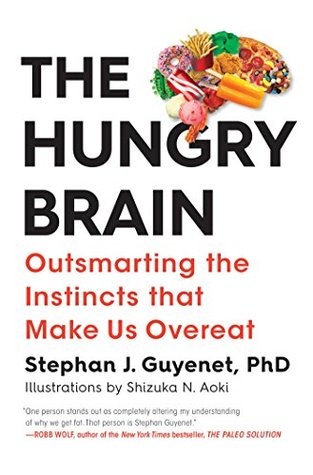More on this book
Community
Kindle Notes & Highlights
Read between
February 9 - June 5, 2022
Between 1980 and today, the US obesity rate more than doubled.
In 1960, one out of seven US adults had obesity. By 2010, that number had increased to one out of three (see figure 2). The prevalence of extreme obesity increased even more remarkably over that time period, from one out of 111 to one out of 17.
The latest research suggests that we may be gravely underestimating the health impacts of obesity, as up to one-third of all deaths among older US adults is linked to excess weight.
As we became a more sedentary nation, calorie intake declined appropriately until about 1960.
Creating an obesity epidemic wasn’t the objective; it was just an unfortunate side effect of the race to make money.
Something about the bland diet was allowing their bodies to feel comfortable at a lower weight, suggesting that just as with Levin’s rats eating plain old rat pellets, the low reward value of the diet may have lowered their adiposity set point.
It appears that exercise helps keep the lipostat happy at a lower set point.
In other words, repeated bouts of overeating don’t just make us fat; they make our bodies want to stay fat.
Short sleepers are not only more likely to have obesity than people who sleep more; they’re also more likely to develop chronic diseases, such as cardiovascular disease and diabetes, and more likely to die overall.
People who hadn’t slept showed greater activation of reward-related regions of the brain such as the ventral striatum in response to gambling gains, while also showing diminished brain responses to losses.
If circadian biology plays an important role in adiposity and health, then rotating shift workers should be heavier and less healthy than people who consistently work during the day. Many studies have shown that this is the case. Rotating shift work is associated with an alarming array of health problems, including obesity, type 2 diabetes, cancer, and cardiovascular disease. The longer a person works a rotating shift, the more likely they are to gain weight and become ill.
Several large studies have shown that people with higher stress levels tend to gain more body fat over time than people with lower stress levels—and this fat gain occurs particularly in the abdominal area, resembling a mild form of Cushing’s syndrome (they also exhibit metabolic
Essentially, taxpayers are subsidizing the very foods that make them fat and sick. Shifting subsidies away from foods that make us fat, and toward foods that don’t, is a common-sense idea that could have a substantial impact on the American food system, and ultimately our waistlines.


